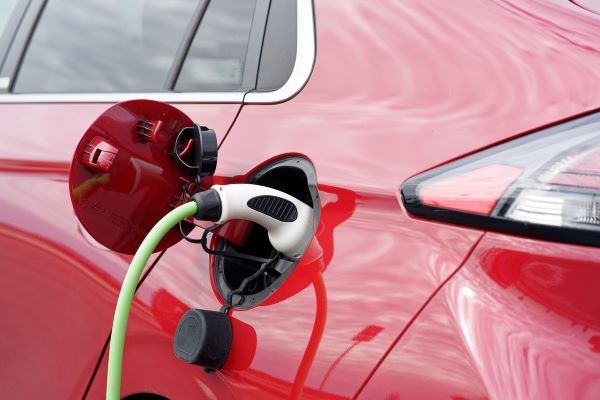Choosing and Using the Right Electric Vehicle Charger: A Comprehensive Guide
05.24.23
The rise in popularity of electric vehicles (EVs) has led to an increased demand for efficient and reliable charging solutions. Choosing the right electric vehicle charger is crucial to ensure optimal performance, safety, and convenience. With a wide range of options available in the market, understanding the key factors to consider and how to effectively use an EV charger is essential.
In this comprehensive guide, we will explore the various aspects of selecting and utilizing the right electric vehicle charger. From understanding charger types and power ratings to considering installation requirements and charging speeds, we will provide you with the knowledge to make an informed decision.
Types of Electric Vehicle Chargers
To begin, let's examine the different types of electric vehicle chargers available:
- Level 1 Chargers: Level 1 chargers are the most basic and commonly available chargers. They operate on a standard 120-volt household outlet and provide a charging rate of around 2 to 5 miles of range per hour of charging.
- Level 2 Chargers: Level 2 chargers require a 240-volt outlet and offer a faster charging rate compared to Level 1 chargers. They can provide approximately 10 to 30 miles of range per hour of charging, depending on the charger's power rating.
- DC Fast Chargers: Also known as Level 3 chargers, DC fast chargers provide rapid charging by delivering direct current (DC) power to the vehicle. They are typically found at public charging stations and can offer up to 80% charge in 30 minutes, making them ideal for long trips.
Power Ratings and Charging Speeds
Power ratings and charging speeds are important factors to consider when choosing an electric vehicle charger:
- Power Ratings: Chargers are available in various power ratings, typically measured in kilowatts (kW). Higher power ratings allow for faster charging. For Level 2 chargers, common power ratings range from 3.3 kW to 22 kW.
- Charging Speeds: The charging speed of an EV is determined by the charger's power rating and the vehicle's onboard charging capabilities. It is important to ensure compatibility between the charger and the vehicle to achieve optimal charging speeds.
Considerations for Choosing the Right Charger
When selecting an electric vehicle charger, several considerations should be taken into account:
- Charging Needs: Assess your typical driving patterns, daily mileage, and available charging infrastructure to determine your charging needs. This will help you determine the appropriate charger type, power rating, and charging speeds required.
- Charger Compatibility: Verify the compatibility of the charger with your specific electric vehicle model. Some EVs may require specific connectors or support only certain charging standards.
- Installation Requirements: Consider the installation requirements of the charger. Level 1 chargers can typically be plugged into a standard outlet, while Level 2 chargers may require professional installation and a dedicated circuit. DC fast chargers necessitate more complex installation and are commonly found at public charging stations.
- Portability and Mobility: If you require a charger that can be easily transported or used in multiple locations, consider portable options. Portable chargers offer flexibility but may have lower power ratings and charging speeds.
Using an Electric Vehicle Charger Effectively
Once you have chosen the right electric vehicle charger, utilizing it effectively is key:
- Safety Precautions: Follow all safety guidelines provided by the charger manufacturer and ensure proper grounding. Avoid using damaged cables or chargers and be cautious of extreme weather conditions.
- Charge Scheduling: Take advantage of features that allow you to schedule charging times. Charging during off-peak hours can save money and reduce strain on the electrical grid.
- Maximizing Efficiency: Optimize charging efficiency by avoiding frequent deep discharges. Aim to keep your battery charge level between 20% and 80% for optimal battery lifespan.
- Utilizing Smartphone Apps: Many chargers come with smartphone apps that provide real-time monitoring, charging status updates, and scheduling capabilities. Explore the features offered by the charger's companion app to enhance your charging experience.
- Public Charging Etiquette: When using public charging stations, be mindful of others and avoid occupying a charging spot for longer than necessary. Move your vehicle once charging is complete to allow others to access the charger.
Choosing and using the right electric vehicle charger is a crucial step towards embracing the convenience and sustainability of electric transportation. By considering the various charger types, power ratings, and installation requirements, you can select a charger that aligns with your charging needs and vehicle specifications.
Remember to prioritize safety, follow the manufacturer's instructions, and leverage the available features to optimize your charging experience. Whether you opt for a Level 1 charger for home use or utilize Level 2 and DC fast chargers for longer trips, the right charger will ensure that your EV remains reliably charged and ready to hit the road.
With the increasing accessibility of electric vehicle chargers and the growing EV infrastructure, the transition to electric transportation has never been more feasible. By making an informed decision and utilizing your EV charger effectively, you contribute to the widespread adoption of sustainable mobility solutions.

